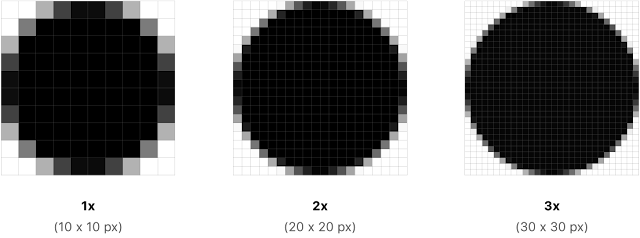Guidelines for Artwork Sizing: Image Quality
We're Answering, once and for all, the difference between resolution, compression, and DPI, so that you can make sure you’re using the right image & artwork for the right use.
At Printmystuffsg, we deal with image/artwork quality a lot since that’s basically, you know what we do best. Photos / Images / Graphics / Artwork that are sent to us by our customers may also be used / downloaded across a lot of different mediums, from tweets, websites, and mobile apps, through to scans, and more. Because of this, we get a lot of questions about artwork quality. Everyone wants to make sure they’re using the best quality image & artwork for their print project, but there’s a lot of technical terms and misinformation around image & artwork quality.

Let’s clear it up.
To understand image & artwork quality, you need to understand two main things: resolution and compression. If you understand these two things, you’re good to know more.
Image Resolution

Megapixels are calculated by multiplying the number of pixels in each dimension and dividing by one million.
Digital images are obviously displayed on digital screens. Digital screens, like digital images, are made up of many pixels. A standard laptop is usually between 2 and 5 megapixels (or approximately 1500 to 2500px in width). When you take a large image, like an 18MP photo, and display it on a laptop screen, the image has to be downsized to fit on the screen.
This leads to lesson 1: using an image larger than what you need doesn’t increase the quality of the resulting image.
Compression
Image resolution is only one half of image quality. To understand the other half, requires understanding image compression. Without getting too technical, image compression is a process to remove file size (note size refers to file ‘weight’, i.e. megabytes, not resolution), while providing a result that looks similar to the original image.
In the simplest sense, compression trades image details for approximations. At light levels of compression, these changes are imperceptible to the human eye. As the level of compression increases, the changes may become more noticeable.
A high resolution photo with a reasonable amount of compression applied can look just as good as a high resolution photo with no compression applied.
This leads to lesson 2: if you’re using the image in a website or distributing it to many people, you should use some amount of compression (usually a quality between 70–150dpi achieves a good balance). If you’re not worried about file size, don’t compress the image.

DPI matters in prints only
DPI is a property added to the file to relate the dimensions of the image to a theoretical printing size. If you do plan on printing the images / artwork, adjusting the DPI may not make better quality image either. DPI is best understood as a function of the image resolution and pre-plan the size of the canvas before the artwork is made.
You can’t increase quality once its lost
If larger resolution images and lower levels of image compression increase the quality of the photo, can you apply these settings to low quality photos to make them high quality?
Unfortunately, decreasing image resolution and increasing image compression are one-way. Once you make the change, there’s no going back. With a good understanding of image resolution and image compression you can make sure to use images & artwork with the best quality possible.
______________________________________________________









0 comments